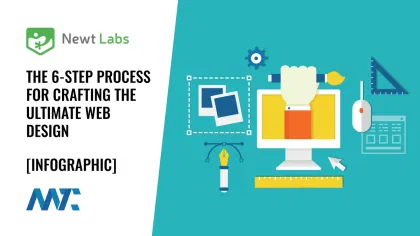
Designing a website is a complex process that involves several stages, each critical to ensuring the final product meets the desired objectives. A comprehensive web design process typically encompasses the following phases: Strategy, Planning, Design, Development, Launch, and Maintenance. Below is a detailed look at each stage, along with additional vital insights that might not be immediately apparent.
Step 1: Strategy
Before any design elements are considered, a clear strategy should be defined. This involves setting goals, understanding the target audience, and determining the website’s unique value proposition (UVP). It’s essential to align the website’s objectives with business goals, whether generating leads, sales, or providing information.
Market research is indispensable at this stage. It’s crucial to analyze competitors and understand market trends to ensure the website can stand out and is positioned effectively.
Step 2: Planning
With a strategy in place, planning involves creating a roadmap for the website. This includes selecting the technology stack, defining the sitemap, and planning the user experience (UX). Wireframes are created to outline the basic page structure without design elements.
Planning should also consider search engine optimization (SEO) from the start. Defining an SEO strategy early ensures the website structure and content are optimized for search engines, which is crucial for online visibility. This includes ensuring that previous links are gracefully redirected to any new pages.
Step 3: Design
The design phase is where the visual layout of the website takes shape. Designers choose color schemes, fonts, website features, and other visual elements while also ensuring the design aligns with the brand identity. It’s also where user interface (UI) elements are designed, focusing on the look and feel.
Responsiveness should be a key consideration in the design stage. With the variety of devices and screen sizes available, the design must ensure a seamless experience across all platforms.
Step 4: Development
Once the design is approved, it moves into development. Here, front-end developers bring the design to life with HTML, CSS, and JavaScript, while back-end developers set up servers and databases and ensure the site’s functionality works as intended.
Incorporating analytics during development can provide valuable data post-launch. Tools like Google Analytics can track user behavior and help inform future optimization efforts. Integration of forms or chat to automate leads to your CRM or sales team is also critical.
Step 5: Launch
The launch phase involves final testing, fixing any bugs, and making the site live. It’s crucial to test the site across different browsers and devices to ensure compatibility.
A launch plan should include marketing strategies to promote the website. This can involve email marketing, social media campaigns, and press releases to generate buzz and drive traffic.
Step 6: Maintenance
Post-launch, websites require ongoing maintenance to ensure they continue to function properly. This includes updating content, ensuring security measures are up to date, and making iterative improvements based on user feedback.
Regularly scheduled reviews and updates are important to keep the website relevant and secure. A content management system (CMS) can facilitate easy updates and allow for the addition of new features.
In addition to these stages, there are critical cross-stage considerations to keep in mind:
- Conversion Optimization: A website should attract visitors and convert them into customers or leads. This involves optimizing the site’s design, content, and user paths to encourage visitors to take a specific action, such as purchasing, signing up for a newsletter, or filling out a contact form. Conversion optimization strategies include clear call-to-action (CTA) buttons, persuasive copywriting, streamlined checkout processes, and the strategic use of testimonials and trust signals. By continuously testing and refining these elements, you can improve the website’s conversion rate and achieve better ROI from your online presence.
- Performance Optimization: Users expect fast-loading pages. Performance should be a key consideration throughout the design and development process to reduce bounce rates, improve user satisfaction, and improve core web vitals (CWV).
- Security: With increasing cyber threats, security should never be an afterthought. Implementing best security practices should be a part of the process from the beginning.
- Feedback Loop: Incorporate feedback at every process stage, from user testing during the design phase to customer feedback post-launch.
- Accessibility: From the start, ensure the website is accessible to all users, including those with disabilities. This is a legal requirement in many jurisdictions and expands your audience reach.
The infographic outlines these steps visually, serving as a quick reference guide for the web design process. It succinctly captures the essence of each phase, providing a helpful overview that complements the more detailed insights outlined above. It can be a handy tool for project managers, designers, and developers to keep track of the web design journey and ensure a successful outcome.